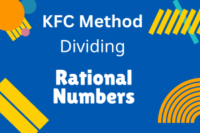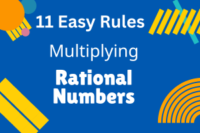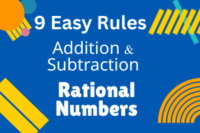Class 10 Physics Chapter 4
Published: 18 Dec 2023
Class 10 Physics Chapter 4 introduces the concept of “Electrostatics”. This is mainly chapter No. 13, “Electrostatics”, of the book of Class 10.
This article consists of Notes, SLO Based Notes and MCQs of Physics, which cover your course, board papers and clear your Physics concept for different types of tests.
Class 10 Physics Chapter 4 Notes
Electrostatics
SLO Base Notes
Class 10 Physics Chapter 4 MCQs
1. The study of charge at rest is called:(a) Electrostatics
(b) Electrodynamics
(c) Magnetism
(d) All of these
Show Answer
Electrostatics
2. When we touch a metal doorknob and feel a shock after sliding across a car seat, what force is responsible for this sensation?
(a) Magnetic force
(b) Gravitational force
(c) Electrostatic force
(d) Frictional force
Show Answer
Electrostatic force
3. According to atomic theory, what role do electric forces play in the formation of liquids and solids?
(a) Electric forces repel atoms
(b) Electric forces have no influence
(c) Electric forces attract atoms
(d) None of these
Show Answer
Electric forces attract atoms
4. What property of an object, similar to mass, is an inherent characteristic?
(a) Temperature
(b) Electric charge
(c) Color
(d) Shape
Show Answer
Electric charge
5. What is the unit of measurement for electric charge?
(a) Volt
(b) Ampere
(c) Coulomb
(d) Ohm
Show Answer
Coulomb
To Download Complete Notes of Physics Notes 10 Class, Click on the given link.
6. What is the denotation of electric charge?(a) C
(b) E
(c) V
(d) Q
Show Answer
Q
7. How many types of electric charge are commonly recognized in the study of electrostatic?
(a) One
(b) Two
(c) Three
(d) Four
Show Answer
Two
8. When two glass rods rubbed with silk cloth are brought near each other, what is their behavior?
(a) They attract each other
(b) They remain neutral
(c) They repel each other
(d) None of these
Show Answer
They repel each other
9. In an atom, which subatomic particle carries a positive charge?
(a) Proton
(b) Electron
(c) Neutron
(d) Hydrogen atom
Show Answer
Proton
10. In an atom, which subatomic particle carries a negative charge?
(a) Proton
(b) Electron
(c) Neutron
(d) Hydrogen atom
Show Answer
Electron
11. In an atom, which subatomic particle carries no charge?
(a) Proton
(b) Electron
(c) Neutron
(d) Hydrogen atom
Show Answer
Neutron
12. What is the charge of a proton?
(a) $ -1.6 \times 10^{-19} \ C $
(b) $ 9.109 \times 10^{-31} \ kg $
(c) $ +1.6 \times 10^{-19} \ C $
(d) $ 0 \ C $
Show Answer
$ +1.6 \times 10^{-19} \ C $
13. What is the charge of an electron?
(a) $ -1.6 \times 10^{-19} \ C $
(b) $ 9.109 \times 10^{-31} \ kg $
(c) $ +1.6 \times 10^{-19} \ C $
(d) $ 0 \ C $
Show Answer
$ -1.6 \times 10^{-19} \ C $
14. What is the charge of a neutron?
(a) $ -1.6 \times 10^{-19} \ C $
(b) $ 9.109 \times 10^{-31} \ kg $
(c) $ +1.6 \times 10^{-19} \ C $
(d) $ 0 \ C $
Show Answer
$ 0 \ C $
15. What is the mass of a proton?
(a) $ 1.6 \times 10^{-19} \ kg $
(b) $ 9.109 \times 10^{-31} \ kg $
(c) $ 1.673 \times 10^{-27} \ kg $
(d) $ 0 \ kg $
Show Answer
$ 1.673 \times 10^{-27} \ kg $
16. What is the mass of an electron?
(a) $ 1.6 \times 10^{-19} \ kg $
(b) $ 9.109 \times 10^{-31} \ kg $
(c) $ 1.673 \times 10^{-27} \ kg $
(d) $ 0 \ kg $
Show Answer
$ 9.109 \times 10^{-31} \ kg $
17. What is the mass of a neutron?
(a) $ 1.6 \times 10^{-19} \ kg $
(b) $ 9.109 \times 10^{-31} \ kg $
(c) $ 1.675 \times 10^{-27} \ kg $
(d) $ 0 \ kg $
Show Answer
$ 1.675 \times 10^{-27} \ kg $
18. What is the process of charging an object by adding or removing electrons called?
(a) Magnetization
(b) Electrification
(c) Electrostatic
(d) None of these
Show Answer
Electrification
19. Which type of charge indicates that an object has more electrons than normal?
(a) Positive charge
(b) Neutral charge
(c) Negative charge
(d) Ionic charge
Show Answer
Negative charge
20. Which type of charge indicates that an object has fewer electrons than normal?
(a) Positive charge
(b) Neutral charge
(c) Negative charge
(d) Ionic charge
Show Answer
Positive charge
21. A change in electrical charge distribution caused by nearby charges:
(a) Magnetic induction
(b) Electrostatic induction
(c) Ohm’s law
(d) None of these
Show Answer
Electrostatic induction
22. The device used to detect and show the presence of electric charges is:
(a) Electroscope
(b) Ammeter
(c) Voltmeter
(d) Thermometer
Show Answer
Electroscope
23. Which component of an electroscope responds to the presence of electric charges?
(a) The metal rod
(b) The metal leaves
(c) The pivot
(d) The glass enclosure
Show Answer
The metal leaves
24. When a negatively charged object is brought close to an electroscope, what happens to the metal leaves of the electroscope?
(a) They collapse
(b) They change color
(c) They spread apart
(d) They vibrate
Show Answer
They spread apart
25. The force of attraction or repulsion between two point charges is directly proportional to the product of the magnitude of charge and inversely proportional to the square of the distance between the charges. What is this law called?
(a) Newton’s Law of Motion
(b) Coulomb’s Law
(c) Hooke’s Law
(d) Ohm’s Law
Show Answer
Coulomb’s Law
26. Coulomb’s Law describes the relationship between:
(a) Mass and velocity
(b) Magnetism and electric current
(c) Pressure and temperature
(d) Electric charge and electric force
Show Answer
Electric charge and electric force
27. According to Coulomb’s Law, what happens to the electric force between two point charges if the distance between them is doubled while keeping the charges constant?
(a) The force is halved
(b) The force is one-fourth
(c) The force remains same
(d) The force is inverted
Show Answer
The force is one-fourth
28. If you double the magnitude of one of the point charges while keeping the other charge and the distance constant, what happens to the electric force between them according to Coulomb’s Law?
(a) The force is halved
(b) The force is doubled
(c) The force is quadrupled
(d) The force remains same
Show Answer
The force is doubled
29. An electric charge considered to exist at a single point, and thus having neither area nor volume is:
(a) Point charge
(b) Nano charge
(c) Atomic charge
(d) Single charge
Show Answer
Point charge
30. The value of Coulomb constant (k) in terms of permittivity of free space is:
(a) $ k = \varepsilon_o $
(b) $ k = \frac{1}{ \varepsilon_o} $
(c) $ k = 4 \pi \varepsilon_o $
(d) $ k = \frac{1}{4 \pi \varepsilon_o} $
Show Answer
$ k = \frac{1}{4 \pi \varepsilon_o} $
31. What is the approximate value of the Coulomb constant (k)?
(a) $ 9.8 \ m/s^2 $
(b) $ 6.67 \times 10^{-11} \ N.m^2/kg^2 $
(c) $ 9 \times 10^9 N.m^2/C^2 $
(d) $ 3 \times 10^8 m/s $
Show Answer
$ 9 \times 10^9 N.m^2/C^2 $
32. The SI unit of the Coulomb constant is:
(a) $ N.m^2/C^2 $
(b) $ J.m/C $
(c) $ C/m^2 $
(d) $ kg.m/s^2 $
Show Answer
$ N.m^2/C^2 $
33. What is the unit of the permittivity of free space $ (\varepsilon_o) $ in the International System of Units (SI)?
(a) $ C^2/N.m^2 $
(b) $ \Omega /m $
(c) $ N.m^2/C^2 $
(d) $ kg/m^3 $
Show Answer
$ C^2/N.m^2 $
34. The notation of the permittivity of free space is:
(a) $ \varepsilon_o $
(b) $ \eta_o $
(c) $ \mu_o $
(d) $ \sigma_o $
Show Answer
$ \varepsilon_o $
35. The value of the Coulomb constant $ (k) $ depends on:
(a) The charge of the particles
(b) The distance between the charges
(c) The medium between the charges
(d) The speed of light
Show Answer
The medium between the charges
36. In a material medium with high permittivity, what happens to the Coulomb force between charges compared to vacuum?
(a) It remains the same
(b) It increases
(c) It becomes zero
(d) It decreases
Show Answer
It decreases
37. The value of the permittivity of free space is:
(a) $ 8.85 \times 10^{-12} C^2/N.m^2 $
(b) $ 9 \times 10^7 Nm/C^2 $
(c) $ 3 \times 10^8 m/s $
(d) $ 6.67 \times 10^{-11} N.m^2/kg^2 $
Show Answer
$ 8.85 \times 10^{-12} C^2/N.m^2 $
38. Coulomb Force is:
(a) Only attractive
(b) Only repulsive
(c) Both attractive and repulsive
(d) None of these
Show Answer
Both attractive and repulsive
39. Gravitational Force is:
(a) Only attractive
(b) Only repulsive
(c) Both attractive and repulsive
(d) None of these
Show Answer
Only attractive
40. What is the region around a charge where an electric test charge would experience an electric force called?
(a) Electromagnetic field
(b) Gravitational field
(c) Magnetic field
(d) Electric field
Show Answer
Electric field
41. A small, positive charge used to measure or detect the electric field at a specific location is:
(a) Point charge
(b) Test charge
(c) Electron
(d) Source charge
Show Answer
Test charge
42. A charge that generates an electric field is called:
(a) Source charge
(b) Test charge
(c) Magnetic charge
(d) Neutral charge
Show Answer
Source charge
43. The strength of an electric field is called:
(a) Electric potential
(b) Electric flux
(c) Electric field intensity
(d) Electric charge density
Show Answer
Electric field intensity
44. The mathematical expression for electric field intensity:
(a) $ E = \frac{F}{q_o} $
(b) $ F = ma $
(c) $ V = IR $
(d) $ P = \frac{F}{A} $
Show Answer
$ E = \frac{F}{q_o} $
45. In how many dimensions does an electric field exist around a charged object?
(a) One dimension
(b) Two dimensions
(c) Three dimensions
(d) Four dimensions
Show Answer
Three dimensions
46. What is the SI unit of electric field?
(a) Newton per coulomb $ (N/C) $
(b) Coulomb per second $ (C/s) $
(c) Joule per coulomb $ (J/C) $
(d) Watt per meter $ (W/m) $
Show Answer
Newton per coulomb $ (N/C) $
47. What is the direction of electric field lines for a positive point charge?
(a) Radially inward
(b) Radially outward
(c) Horizontal
(d) Vertical
Show Answer
Radially outward
48. For a negative point charge, the electric field lines converge in which direction?
(a) Radially inward
(b) Radially outward
(c) Horizontal
(d) Vertical
Show Answer
Radially inward
49. The imaginary lines showing the direction of the electric field is called:
(a) Electric paths
(b) Flux lines
(c) Voltage lines
(d) Electric field lines
Show Answer
Electric field lines
50. Electric field intensity is __________ quantity.
(a) Scalar
(b) Vector
(c) Scalar and vector
(d) None of these
Show Answer
Vector
51. What do electric field intensity vectors help to visualize?
(a) The charge of an object
(b) The speed of sound
(c) The electric field strength
(d) The heat transfer
Show Answer
The electric field strength
52. If a charge experiences a force of 15 Newton and has a charge of 5 Coulombs, what is the electric field strength at that location?
(a) $ E = 15 \ N $
(b) $ E = \frac{3 N}{C} $
(c) $ E = 20 \frac{N}{C} $
(d) $ E = 75 \frac{N}{C} $
Show Answer
$ E = \frac{3 N}{C} $
53. A test charge with a value of $ 2 \ C $ experiences an electric field with strength of $ 8 \ N/C $. What is the force acting on the test charge at that location?
(a) $ F = 16 \mu N $
(b) $ F = 10 \ N $
(c) $ F = 2 \mu N $
(d) $ F = 16 \ N $
Show Answer
$ F = 16 \ N $
54. The term that describes the electric potential energy per unit charge in an electric field:
(a) Electric force
(b) Electric charge density
(c) Electric potential
(d) Electric flux
Show Answer
Electric potential
55. What is the unit of electric potential?
(a) Newton per coulomb $ (N/C) $
(b) Joules per coulomb $ (J/C) $
(c) Watts per meter $ (W/m) $
(d) None of these
Show Answer
Joules per coulomb $ (J/C) $
56. The equivalent of one Joule per Coulomb $ (1 \ J/C) $ is:
(a) One Volt $ (1 \ V) $
(b) One Newton $ (1 \ N) $
(c) One Watt $ (1 \ W) $
(d) One Pascal $ (1 \ Pa) $
Show Answer
One Volt $ (1 \ V) $
57. What symbol is commonly used to denote electric potential?
(a) $ E $
(b) $ Q $
(c) $ V $
(d) $ F $
Show Answer
$ V $
58. What is the mathematical expression for electric potential?
(a) $ V = U + q $
(b) $ V = \frac{U}{q} $
(c) $ V = U \times q $
(d) $ V = U – q $
Show Answer
$ V = \frac{U}{q} $
59. Electric potential is __________ quantity.
(a) Scalar
(b) Vector
(c) Scalar and vector
(d) None of these
Show Answer
Scalar
60. The difference of electric potential between two points is:
(a) Electric field strength
(b) Electric flux
(c) Electric potential
(d) Potential difference
Show Answer
Potential difference
61. A charge of $ 5 $ Coulombs (C) has an electric potential energy of $ 20 $ Joules (J). What is the electric potential at that location?
(a) $ V = 25 \ V $
(b) $ V = 4 \ V $
(c) $ V = \frac{1}{4} \ V $
(d) $ V = 100 \ V $
Show Answer
$ V = 4 \ V $
62. If the electric potential at a point is 12 Volts (V), and a charge of 3 Coulombs (C) is placed at that location, what is the electric potential energy at that point?
(a) $ U = 12 \ J $
(b) $ U = 36 \ J $
(c) $ U = 4 \ J $
(d) $ U = \frac{1}{4} \ J $
Show Answer
$ U = 36 \ J $
63. What is the process used in modern power stations to separate dust from smoke particles before releasing them into the environment?
(a) Electrostatic painting
(b) Magnetic separation
(c) Electrostatic precipitation
(d) Chemical filtration
Show Answer
Electrostatic precipitation
64. In electrostatic spray painting, how is the paint applied?
(a) By using a regular spray painter
(b) By electrostatically charging the paint
(c) By manually brushing it onto surfaces
(d) By blowing it onto surfaces with a fan
Show Answer
By electrostatically charging the paint
65. What is the primary cause of lightning?
(a) Magnetic induction
(b) Electrostatic painting
(c) Dielectric breakdown of air
(d) Radioactivity
Show Answer
Dielectric breakdown of air
66. What’s the purpose of lightning conductors on structures?
(a) Protect against lightning strikes
(b) Generate electricity
(c) Cause damage
(d) Provide shelter
Show Answer
Protect against lightning strikes
67. How should one stay safe during a thunderstorm?
(a) Stand under tall trees
(b) Stay indoors or in a car
(c) Use metal umbrellas
(d) Run across open fields
Show Answer
Stay indoors or in a car
68. What is the primary function of a capacitor?
(a) To generate electricity
(b) To conduct electricity
(c) To store charge
(d) To measure potential
Show Answer
To store charge
69. In a capacitor, what are the two conductors separated from each other called?
(a) Anode and cathode
(b) Plates
(c) Wires
(d) Insulators
Show Answer
Plates
70. What is the electric potential difference between the positive and negative plates of a capacitor called?
(a) Voltage
(b) Capacitance
(c) Resistance
(d) Current
Show Answer
Voltage
71. What is the insulating medium that separates the plates of a capacitor referred to as?
(a) Conductive material
(b) Dielectric
(c) Electrolyte
(d) Insulator
Show Answer
Dielectric
72. What is the SI unit of capacitance?
(a) Coulomb $ (C) $
(b) Ohm $ (\Omega) $
(c) Farad $ (F) $
(d) Watt $ (W) $
Show Answer
Farad $ (F) $
73. What is the unit of capacitance typically used in practice?
(a) Coulombs
(b) Microfarads $ (\mu F) $
(c) Farads $ (F) $
(d) Amperes
Show Answer
Microfarads $ (\mu F) $
74. What can happen if a capacitor is overfilled by applying too much voltage?
(a) It becomes supercharged
(b) It becomes less efficient
(c) Dielectric breakdown can occur
(d) It generates excess heat
Show Answer
Dielectric breakdown can occur
75. What is the electric field between the plates of a capacitor responsible for when dielectric breakdown occurs?
(a) It causes the plates to repel
(b) It generates excess heat
(c) It dissipates the charge
(d) It leads to sparks and current flow
Show Answer
It leads to sparks and current flow
76. In a capacitor, which factor primarily determines the capacitance?
(a) The voltage applied
(b) The size and shape of the plates
(c) The charge on one conductor
(d) The material of the conductors
Show Answer
The size and shape of the plates
77. What is the term for the ratio of the magnitude of charge on a conductor to the potential difference between the conductors?
(a) Voltage
(b) Resistance
(c) Capacitance
(d) Current
Show Answer
Capacitance
78. One Farad is equal to:
(a) 1 coulomb per volt
(b) 1 ohm
(c) 1 joule
(d) 1 Newton
Show Answer
1 coulomb per volt
79. What is the formula for the capacitance $ (C) $ of a capacitor?
(a) $ C = \frac{Q}{V} $
(b) $ C = Q + V $
(c) $ C = Q – V $
(d) $ C = Q \times V $
Show Answer
$ C = \frac{Q}{V} $
80. What is the effect of doubling the voltage across a capacitor on the charge stored?
(a) The charge is halved
(b) The charge remains the same
(c) The charge is doubled
(d) None of these
Show Answer
The charge is doubled
81. Which type of capacitor is most popular for values greater than about 1 microfarad?
(a) Ceramic capacitor
(b) Electrolytic tubular capacitor
(c) Tantalum capacitor
(d) Variable capacitor
Show Answer
Electrolytic tubular capacitor
82. How is an electrolytic tubular capacitor constructed?
(a) Using two ceramic plates
(b) Using copper wires
(c) Using two thin foils of aluminum separated by paper
(d) Using glass sheets
Show Answer
Using two thin foils of aluminum separated by paper
83. What is placed between the two thin foils of aluminum in an electrolytic tubular capacitor?
(a) A ceramic insulator
(b) An electrolyte-soaked paper sheet
(c) A magnet
(d) A vacuum
Show Answer
An electrolyte-soaked paper sheet
84. If a capacitor has a capacitance of 10 microfarads $ (\mu F) $ and a voltage of 50 volts $ (V) $ applied to it, what is the charge $ (Q) $ stored in the capacitor?
(a) $ 5,000 \ C $
(b) $ 500 \ \mu C $
(c) $ 0.2 \ C $
(d) $ 0.005 \ C $
Show Answer
$ 500 \mu C $
85. Given a capacitor with a capacitance of 1 farads $ (F) $ and a charge $ (Q) $ of 2 coulombs $ (C) $, what is the voltage $ (V) $ across the capacitor?
(a) 0.02 V
(b) 200 V
(c) 0.002 V
(d) 2 V
Show Answer
2 V
86. A capacitor holds a charge (Q) of 50 coulombs and has a voltage (V) of 10 volts. What is the capacitance (C) of the capacitor?
(a) 50 F
(b) 0.5 F
(c) 5 F
(d) 0.05 F
Show Answer
5 F
87. When capacitors are connected in series, what happens to their total capacitance?
(a) It increases
(b) It decreases
(c) It remains the same
(d) None of these
Show Answer
It decreases
88. If you have three capacitors with capacitances $ C_1, C_2 \ and \ C_3 $ connected in series, what is the formula for calculating the total capacitance $ (C_e) $ in a series combination?
(a) $ C_e = C_1 + C_2 + C_3 $
(b) $ \frac{1}{C_e} = \frac{1}{C_1} + \frac{1}{C_2} + \frac{1}{C_3} $
(c) $ C_e = C_1 \times C_2 \times C_3 $
(d) $ C_e = C_1 – C_2 – C_3 $
Show Answer
$ \frac{1}{C_e} = \frac{1}{C_1} + \frac{1}{C_2} + \frac{1}{C_3} $
89. In a series combination of capacitors, what quantity stays the same across each capacitor?
(a) Voltage
(b) Charge
(c) Energy
(d) Capacitance
Show Answer
Charge
90. What quantity is distributed across each capacitor connected in series?
(a) Voltage
(b) Charge
(c) Energy
(d) Capacitance
Show Answer
Voltage
91. Two capacitors, $ C_1 \ and \ C_2 $, are connected in series, If $ C_1 = 5 \ microfarads \ (\mu F) \ and \ C_2 = 10 \ \mu F $, what is the value of Ce?
(a) $ 2 \ \mu F $
(b) $ 3 \ \mu F $
(c) $ 3.33 \ \mu F $
(d) $ 15 \ \mu F $
Show Answer
$ 3.33 \ \mu F $
92. You have three capacitors in series, $ C_1 = 4 \ \mu F, C_2 = 6 \ \mu F, \ and \ C_3 = 8 \ \mu F $. What is the total capacitance $ (C_e) $ of this series combination?
(a) $ 2 \ \mu F $
(b) $ 3 \ \mu F $
(c) $ 4 \ \mu F $
(d) $ 18 \ \mu F $
Show Answer
$ 2 \ \mu F $
93. Two capacitors, $ C_1 \ and \ C_2 $, are connected in series. If $ C_e = 2 \ microfarads \ (\mu F) \ and \ C_2 = 4 \mu F $, what is the value of $ C_1 $?
(a) $ 1.33 \ \mu F $
(b) $ 4 \ \mu F $
(c) $ 2.67 \ \mu F $
(d) $ 12 \ \mu F $
Show Answer
$ 4 \ \mu F $
94. When capacitors are connected in parallel, what happens to their total capacitance?
(a) It increases
(b) It decreases
(c) It remains the same
(d) None of these
Show Answer
It increases
95. If you have three capacitors with capacitances $ C_1, \ C_2, \ and \ C_3 $ connected in parallel, what is the formula for calculating the total capacitance $ (C_e) $ in a parallel combination?
(a) $ C_e = C_1 + C_2 + C_3 $
(b) $ \frac{1}{C_e} = \frac{1}{C_1} + \frac{1}{C_2} + \frac{1}{C_3} $
(c) $ C_e = C_1 \times C_2 \times C_3 $
(d) $ C_e = C_1 – C_2 – C_3 $
Show Answer
$ C_e = C_1 + C_2 + C_3 $
96. In a parallel combination of capacitors, what quantity stays the same across each capacitor?
(a) Voltage
(b) Charge
(c) Energy
(d) Capacitance
Show Answer
Voltage
97. What quantity is distributed across each capacitor connected in parallel?
(a) Voltage
(b) Charge
(c) Energy
(d) Capacitance
Show Answer
Charge
98. Two capacitors, $ C_1 \ and \ C_2 $, are connected in parallel. If $ C_1 = 12 \ microfarads (\mu F) and C_2 = 10 \ \mu F $, what is the value of $ C_e $ (total capacitance)?
(a) $ 15 \ \mu F $
(b) $ 22 \ \mu F $
(c) $ 24 \ \mu F $
(d) $ 28 \ \mu F $
Show Answer
$ 22 \ \mu F $
99. You have three capacitors in parallel, $ C_1 = 4 \ \mu F, C_2 = 6 \ \mu F, \ and \ C_3 = 8 \ \mu F $. What is the total capacitance $ (C_e) $ of this parallel combination?
(a) $ 10 \ \mu F $
(b) $ 12 \ \mu F $
(c) $ 18 \ \mu F $
(d) $ 24 \ \mu F $
Show Answer
$ 18 \ \mu F $
100. Two capacitors, $ C_1 \ and \ C_2 $, are connected in parallel. If $ C_e $ (total capacitance) is $ 70 \ microfarads \ (\mu F) \ and \ C_2 = 40 \ \mu F $, what is the value of $ C_1 $?
(a) $ 20 \ \mu F $
(b) $ 30 \ \mu F $
(c) $ 40 \ \mu F $
(d) $ 100 \ \mu F $
Show Answer
$ 30 \ \mu F $
Class 10 Physics MCQs (All Chapters)

- Be Respectful
- Stay Relevant
- Stay Positive
- True Feedback
- Encourage Discussion
- Avoid Spamming
- No Fake News
- Don't Copy-Paste
- No Personal Attacks



- Be Respectful
- Stay Relevant
- Stay Positive
- True Feedback
- Encourage Discussion
- Avoid Spamming
- No Fake News
- Don't Copy-Paste
- No Personal Attacks





